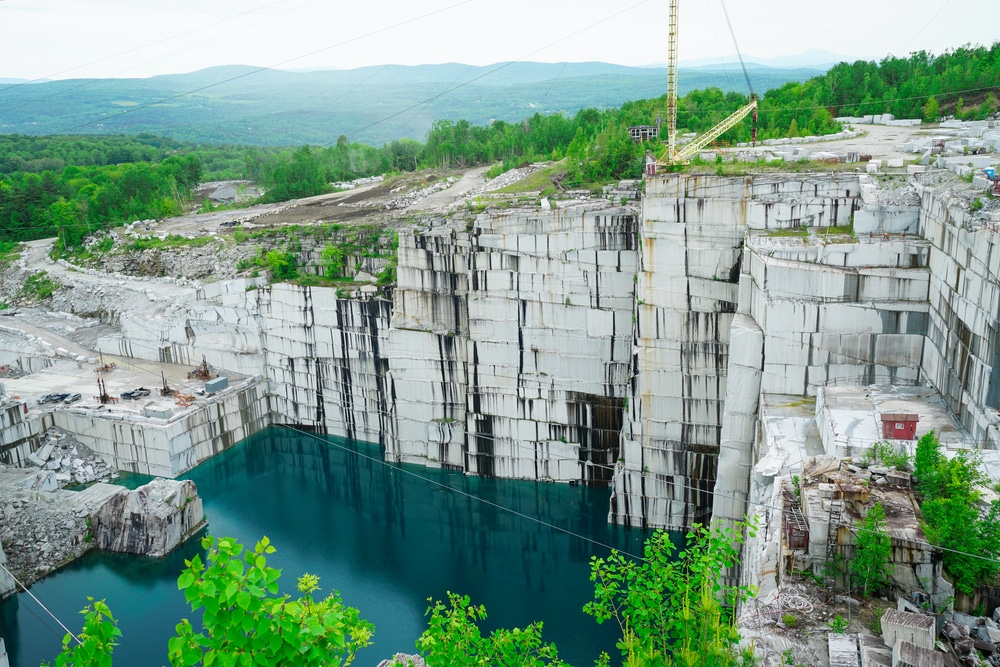Revealing Granite Quarries in South Africa Legacy: A Journey Via Quarries
Revealing Granite Quarries in South Africa Legacy: A Journey Via Quarries
Blog Article
Unveiling the Mysteries of Granite Quarrying: Where Stamina and Style Meet
The world of granite quarrying is a world where the raw toughness of nature converges with human creativity to develop structures that stand the examination of time with an air of elegance. From the midsts of quarries to the careful sprucing up in workshops, the process of transforming granite right into building marvels is a complex dancing of practice and innovation. As we peer into the depths of this old craft, we begin to discover the concealed details that shape the very essence of our constructed setting.
The Origins of Granite Quarrying
In the annals of architectural background, the origins of granite quarrying are shrouded in a tapestry of ancient craftsmanship and geological marvels. Dating back to old Egypt and Mesopotamia, the removal of granite from quarries noted the start of a trip that would at some point lead to the creation of a few of the world's most renowned frameworks.
Granite quarrying's origins can be mapped to the experienced artisans who recognized the stone's sturdiness and visual charm. Via a mix of primitive devices and large resolution, these very early quarry employees uncovered granite blocks that would certainly end up being the structure blocks of people.
As people advanced, so did the strategies of quarrying granite. The Romans, renowned for their design expertise, established sophisticated techniques for drawing out granite to construct monuments, holy places, and roadways that stood the examination of time.
The tradition of these ancient quarrying methods remains to shape modern architecture, with granite continuing to be an icon of stamina and beauty in building jobs around the globe. (granite quarries in south africa)
Devices of the Quarrying Profession
The advancement of granite quarrying strategies from ancient worlds to modern times highlights the critical duty played by the tools of the quarrying sell forming the market's practices. In old times, quarrying tools were simple, frequently containing knives, hammers, and wedges made from materials like bronze or iron. These devices needed significant workforce and time to essence granite blocks from quarries.

Furthermore, the intro of pneumatically-driven tools and high-powered machinery has substantially minimized the physical labor called for in quarrying procedures, boosting worker security and efficiency. As the quarrying market proceeds to innovate, the devices of the profession continue to be at the center of driving progression and forming the future of granite removal.
Removing Blocks of Granite
Making use of accuracy equipment and advanced techniques, the extraction of granite blocks from quarries has actually come to be a sophisticated process in the modern quarrying industry. The initial step entails recognizing the place and size of the granite deposit to determine the most reliable removal technique. Once a suitable website is picked, the extraction process starts with the exploration of holes for the placement of nitroglycerins. Managed blasting techniques are after that utilized to disintegrate the granite right into convenient sections.

Polishing and Ending Up Strategies
To achieve a remarkable surface area on granite blocks, competent artisans use a series of thorough polishing and finishing Read Full Report strategies. After the preliminary removal and forming processes, the granite obstructs go through a complete polishing phase to boost their natural elegance and longevity. One usual approach utilized in brightening granite is ruby abrasion, where industrial rubies are used to grind and brighten the stone to a smooth coating. This process not just creates a shiny surface area however additionally makes sure uniformity in shade and texture throughout the granite block.
Along with sprucing up, ending up techniques are put on further fine-tune the granite's appearance. These techniques may include flaming, developing, or cleaning, each offering unique structures and coatings to match different aesthetic choices. Flaming, as an example, involves subjecting the granite surface area to heats to develop a rough, textured finish, suitable for exterior applications where slip-resistance is essential. Developing, on the various other hand, gives a matte coating that is smooth to the touch, perfect for indoor counter tops and flooring. By very carefully picking and applying these brightening and completing strategies, craftsmens can change raw granite obstructs right into elegant pieces that showcase both basics strength and elegance.

Environmental Influence and Sustainability
With the growing emphasis on ecological awareness in the industry, granite quarrying methods are significantly scrutinized for their impact on natural sources and lasting sustainability. Additionally, the transportation of granite from quarries to processing centers generates carbon emissions, additionally adding to ecological degradation.
To reduce these effects and make sure sustainability in granite quarrying, sector stakeholders are taking on various steps. Carrying out sophisticated modern technologies to lower power consumption and water use, redeeming quarried land for eco-friendly restoration, and advertising liable sourcing techniques are some strategies being employed. Furthermore, certifications such as the Forest Stewardship Council (FSC) and the Leadership in Power and Environmental Layout (LEED) aid customers recognize eco-friendly granite items.
Final Thought
Finally, granite quarrying is a procedure that needs specialized tools and strategies to essence blocks of granite and polish them to a high degree of surface. While the environmental influence of quarrying can be considerable, efforts are being made to boost sustainability methods in the sector. Generally, granite quarrying is a delicate equilibrium between using the stamina and elegance of this all-natural stone while decreasing its influence on the environment.
Report this page